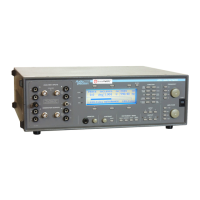The fundamental tone has been reduced to a level where it will be
insignificant. The filtered signal is then measured with another
voltmeter, and the reading is presented as a ratio of the two voltmeter
readings.
Notice that the final measurement is wideband. It measures the total of
all the noise sources within the frequency range of interest. It is not
specific to the frequency of the fundamental tone. While some devices
may create more or less harmonic distortion for different fundamental
frequencies, the other sources of unwanted sound will contribute to the
reading no matter what fundamental frequency is used.
Surprises and Pitfalls in THD+N Measurements
What Signal is Dominant?
While all types of unwanted sounds are included in the THD+N
measurement, they may not all contribute to the overall reading. Like
all voltmeter readings on signals that include several frequency
components, the highest-amplitude components will dominate the
reading.
When comparing two individual signal components such as
interference tones or distortion products, the limit is commonly
considered to be 10 dB. If one component is 10 dB above the other,
only the higher component will be significant to an amplitude reading.
However, when there are many lower components, the combination
may become significant. For example, random noise can be a
significant contribution to a THD+N measurement even though its
amplitude at any particular frequency is well below other products.
Since noise exists at every frequency, and each frequency has a tiny
effect on the overall reading, the combination of all the noise may be
quite significant.
Often THD+N tests will be used in conjunction with noise-only tests to
be certain that a problem is not hiding underneath a more significant
contributor.
The section Isolating Sources of THD+N (page 4-37) explains some
strategies for determining which unwanted signal is dominating the
reading.
FUNCTION Descriptions Understanding THD + N
4 Functions
ATS-1 Access User's Manual 4-13

